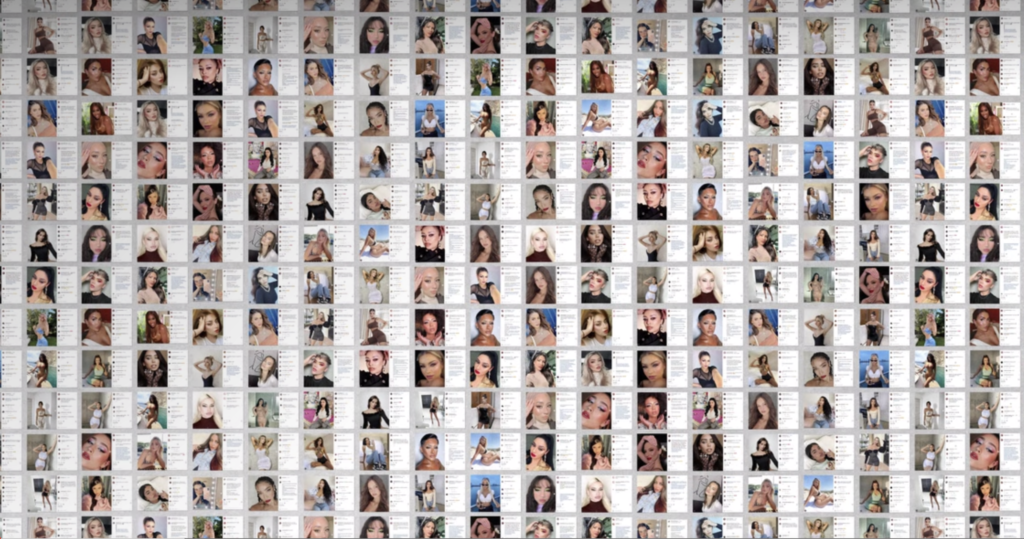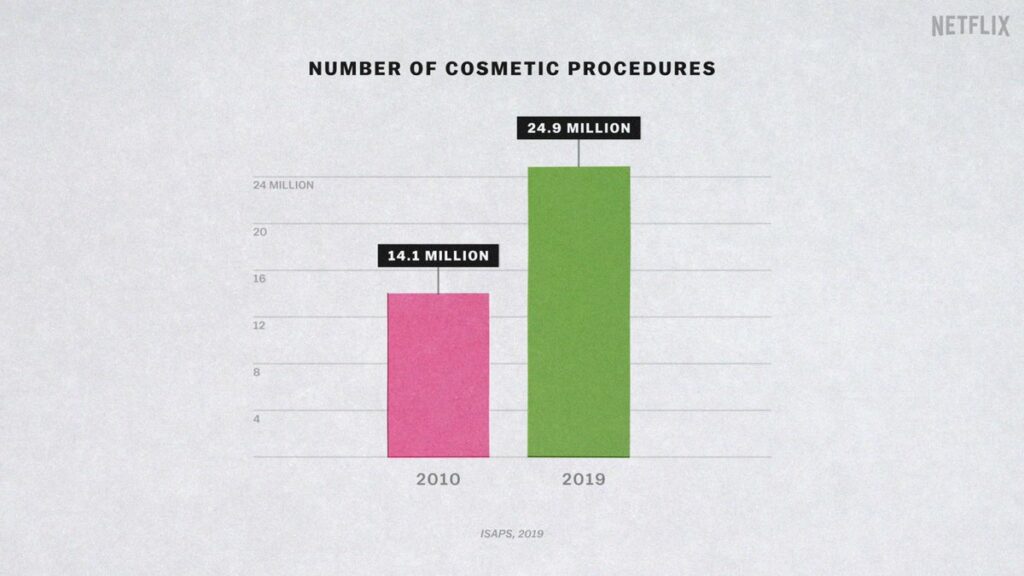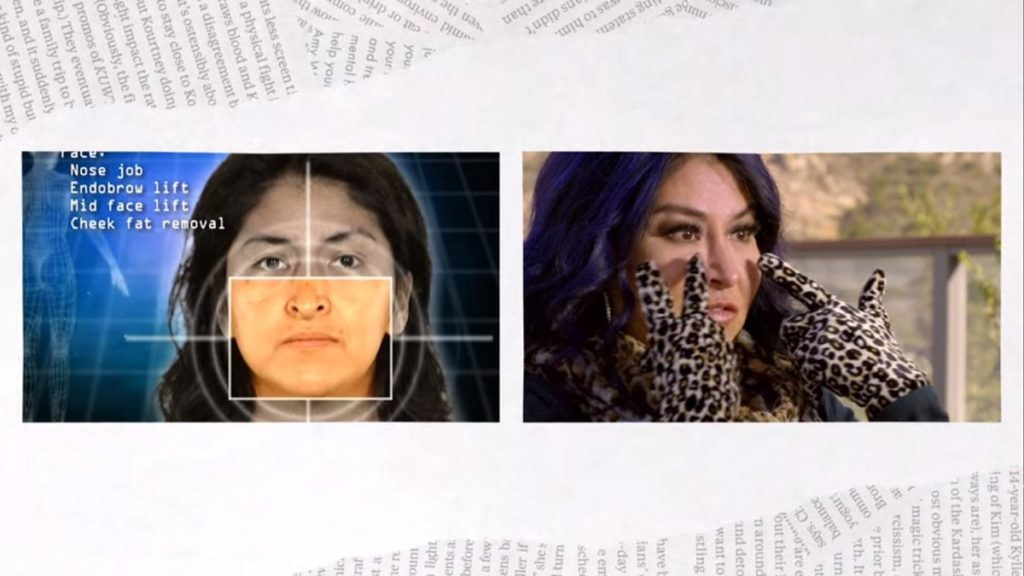Diese Vox-Serie befasst sich mit den unterschiedlichsten Themen, Explained Season 3 Episode 10 “Plastic Surgery” beleuchtet das sich durch Instagram verändernde Schönheitsideal und das Mittel Schönheitsoperation um dieses zu erreichen sowie die Ursprünge und Auswirkungen jener Eingriffe.

Ein perfektes Instagram-Gesicht und formschönes Gesäß Schöneheits-OPs verwandeln Beauty-Trends in Realität.
Vor allem das InstagramFace wird heutzutage angestrebt. Millionen ähnliche Gesichter aufgrund von Mandelaugen, und vollen weiche Lippen. Immer mehr kaufen sich dieses Filtergesicht auch im echten Leben und so wird das InstagramFace mehr und mehr zur Realität.

Die Grenzen des Normalen werden immer enger gesteckt, denn je mehr Leute sich operieren lassen desto eher werden Eingriffe als normal angesehen und desto mehr wächst der Druck sich diesem Ideal anzupassen – da es ja möglich ist. Schönheitsideale sind heute ohne OPs schwer zu erreichen. Frauen wollen jetzt Gesichtsstrukturen, wie sie die Filter zaubern- große Lippen, perfekte Augenbrauen, die richtige Nase und Kieferpartie.
Uns steht eine Zukunft bevor in der wir unser Erscheinungsbild drastisch verändern können da Eingriffe dieser Art risikoärmer und erschwinglicher geworden sind. Plastische Operationen muss man nicht mehr verheimlichen.

Die Maßnahmen die wir ergreifen um „gut“ auszusehen sind unterschiedlich extrem.

MakeUp, Körperpflege, Haarfarben , Push-Up BH
(Natürliche Schönheit unterstreichen)
Botox, Filler, Cool Sculpting
(Minimalinvasive Eingriffe)
Brustvergrößerungen, Po Lift, Knochenformung
(Operative Eingriffe)

Je mehr man sich dem Schönheitsideal beugt desto mehr wird es gestärkt. Wie etwa vor etwa 30 Jahren unbehaarte Körper normalisiert wurden, und zwar Weltweit.
Es findet stetig ein Wandel von früher extrem geltenden Eingriffen zur Normalisierung statt. Wie etwa bei Nasen-OPs. ->Eingriffe die Früher als Extrem angesehen waren sind heute Routine-Eingriffe
Reality-TV-Show “The Swan” aus dem Jahr 2004.

In der Show wurden die “hässlichen” Frauen komplett umoperiert und optimiert, und diejenige, welche am Ende am besten aussah, wurde zur Siegerin gekürt. Sie Serie erntete zwar viel Kritik doch für die zweite Staffel bewarben sich 500.000 Frauen.
Dieses Konzept ist nicht neu. Bereits 1924 rief eine Zeitung zum Operationsmarathon auf. In der Anzeige wurde die reizloseste Dame in NewYork gesucht um ihr zu Ihrem Glück zu verhelfen. Jaqueline Naagl wurde ausgewählt und bekam danach sogar Filmrollen angeboten.
Schönheitsoperationen wurden revolutioniert durch die Korrektur der Kriegswunden von entstellten Soldaten.

Prof. Dr. J. Joseph wird als Gründer der Plastischen Chirurgie bezeichnet. Er behandelte nicht nur Kriegsverwundete. Trug also dazu bei Operationen aus rein ästhetischen Gründen salonfähig zu machen.

In manchen Ländern gehören Schönheits-OPs zum Erwachsenwerden dazu. In Südkorea hat jede dritte 20-Jährige bereits mindestens einen Eingriff hinter sich. Es gibt dort einen sogar einen Begriff für „Employment Surgery“ – Eingriffe die einen helfen sollen leichter einen Job zu finden.
Der brasilianische Chirurg Dr. Ivo Pitanguy wird als Papst der Plastischen Chirurgie bezeichnet und als Nationalheld gefeiert. Einst Operateur der superreichen und Inselbesitzer operiert Mittellose kostenlos. Jeder hat ein Anrecht auf Schönheit.
Er ist zudem Pionier der plastischen Chirurgie und entwickelte eine Bauchstraffung bei welcher die Narbe im Bikinibereich versteckt liegt, Minifacelifts und das Brazilian ButtLift – der Eingriff mit dem größten Quantitätszuwachs.

Bei keinen anderen Eingriff ist die Zahl der Eingriffe in den letzen Jahren so stark gestiegen wie beim Brazilian Butt-Lift (65.9%).
Forscher haben versucht die Vorteile von Schöneheitsoperationen zu messen diese sind jedoch schwer messbar aber bei einer Metastudie fand man zumindest herraus, dass die Lebensqualität nach Operationen anstieg. Das Ausmaß ist jedoch Abhängig vom Eingriff (z.B. bei Geschlechtsangleichende OPs steigt Lebensqualität mehr). Und jedenfalls steigern plastische Eingriffe das Selbstbewusstsein.
I often say that I’m not in the business of making people look better, I’m in the business of making people feel better
Dr. Haideh Hirmand – Plastische Chirurgin
Quelle: Klein, Ezra; Posner, Joe : Explained, Season 3: Plastic Surgery. Netflix, 2021. Available online at https://www.netflix.com/browse?jbv=80216752













